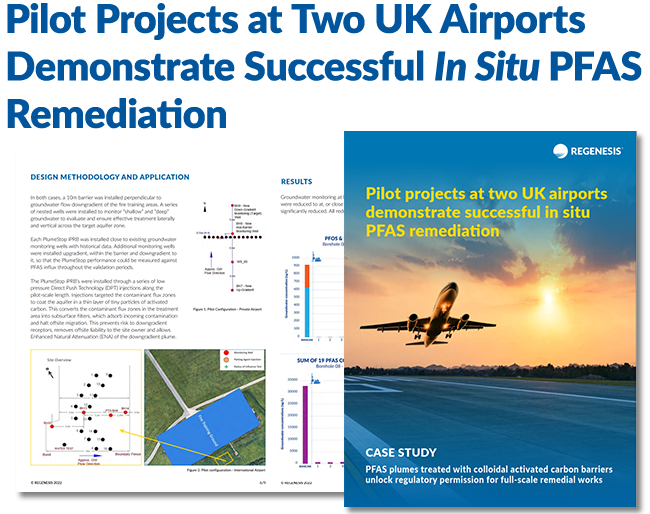This case study reviews two airport sites in the United Kingdom where the groundwater was contaminated with PFAS that had originated from the use of Aqueous Film Forming Foams (AFFF). An in situ approach using colloidal activated carbon permeable reactive barriers (PRB) combined with successful pilot study results allowed for regulatory permission for full-scale PlumeStop PRB installations on both sites.
Case study highlights:
- Successful colloidal activated carbon treatments have lead to regulatory permission for full-scale remedial projects
- Design Verification Testing (DVT) conducted to confirm the flux of PFAS
- PlumeStop PRBs targeted contaminant flux zones, converting the aquifer into a purifying activated carbon filter
- Groundwater monitoring at both sites showed that PFOS and PFOA were reduced to at, or close to detection limits
At both sites, PlumeStop barriers were installed perpendicular to groundwater flow downgradient of the fire training areas. Each PlumeStop PRB was installed close to existing groundwater monitoring wells with historical data. This converts the contaminant flux zones in the treatment area into subsurface filters, which adsorb incoming contamination and stop offsite migration. This prevents risk to downgradient receptors, removes offsite liability from the site owner and allows Enhanced Natural Attenuation (ENA) of the downgradient PFAS plume.


